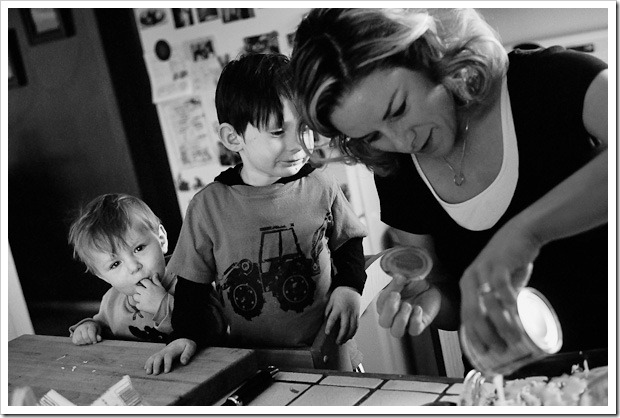The problem with being a creative is not always the lack of ideas; the problem with being a creative is sometimes too many ideas. Ted Orland, in Art and Fear, a book he co-wrote with David Bayles, mentions that often times the problem is better identified as a lack of creative discipline regarding the ideas. We get overrun by them and they can get it the way of actually creating and completing projects.
The other day I complained to my wife that I hadn’t had enough time to go out and photograph what I wanted. Her reply was not what I expected. Nor was it what I wanted to hear, “yeah, but you’re getting better at shooting what you CAN shoot…!!”
Ouch, but true!
What she meant was I was getting better at photographing our kids and our family life. She’s right. If I keep at something, keep studying, keep applying myself, learn new techniques and ways of seeing or interpreting, the images get better – mostly because I get better as a photographer and editor. And that means something.
All of us are limited by our life situation. We like to think we are free, and we like to yearn for more freedom. But we are as free as we are and lots can be done with that. The challenge often is not necessarily to strive for greater freedom, for greater access, for more time, for more gear, for more, for more…; rather the challenge is to focus on what is possible. To dream what is possible where others might not see it.
There is a story I heard years ago about a woman in India who was revered as a meditation teacher. Early in her life she had married and her husband forbade her to practice formal meditation. She acquiesced. But still she somehow practiced. When asked much later in her life about how she managed to develop such strong meditative practices and such great inner peace without formal practice she answered, as many meditation teachers will, with a question: “what is meditation?”
Her students dutifully responded, “the practice of paying attention in this moment and this moment only.”
She then continued, “and so, when I stirred the rice, I stirred the rice; When I swept the floor I swept the floor; and when I ate, I ate.”
She did what she could with what she had, and she perfected her practice.
What can you do in this moment, in this situation, to practice photography despite your situation? What can you do without changing anything externally, but rather turning your attention to what you CAN do. Can you focus there? (Pun not intended.)
I can’t always photograph what I want to photograph, but I sure can photograph what is available to me. And can you guess which option will actually result in an image – perhaps even a good one?


